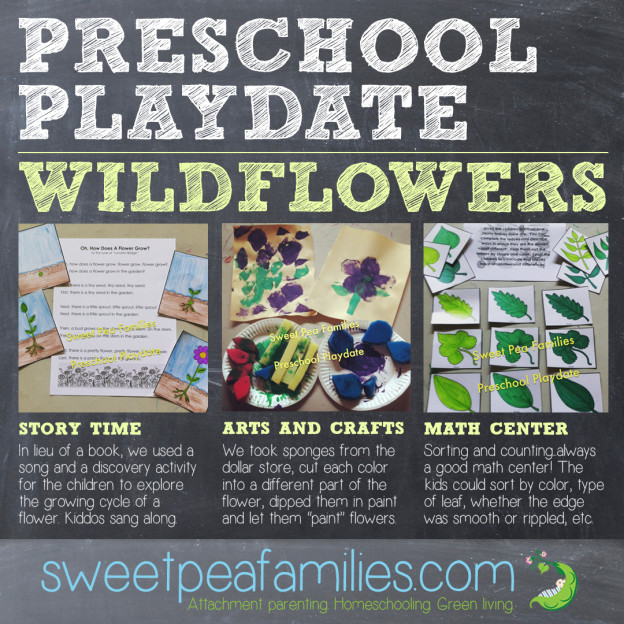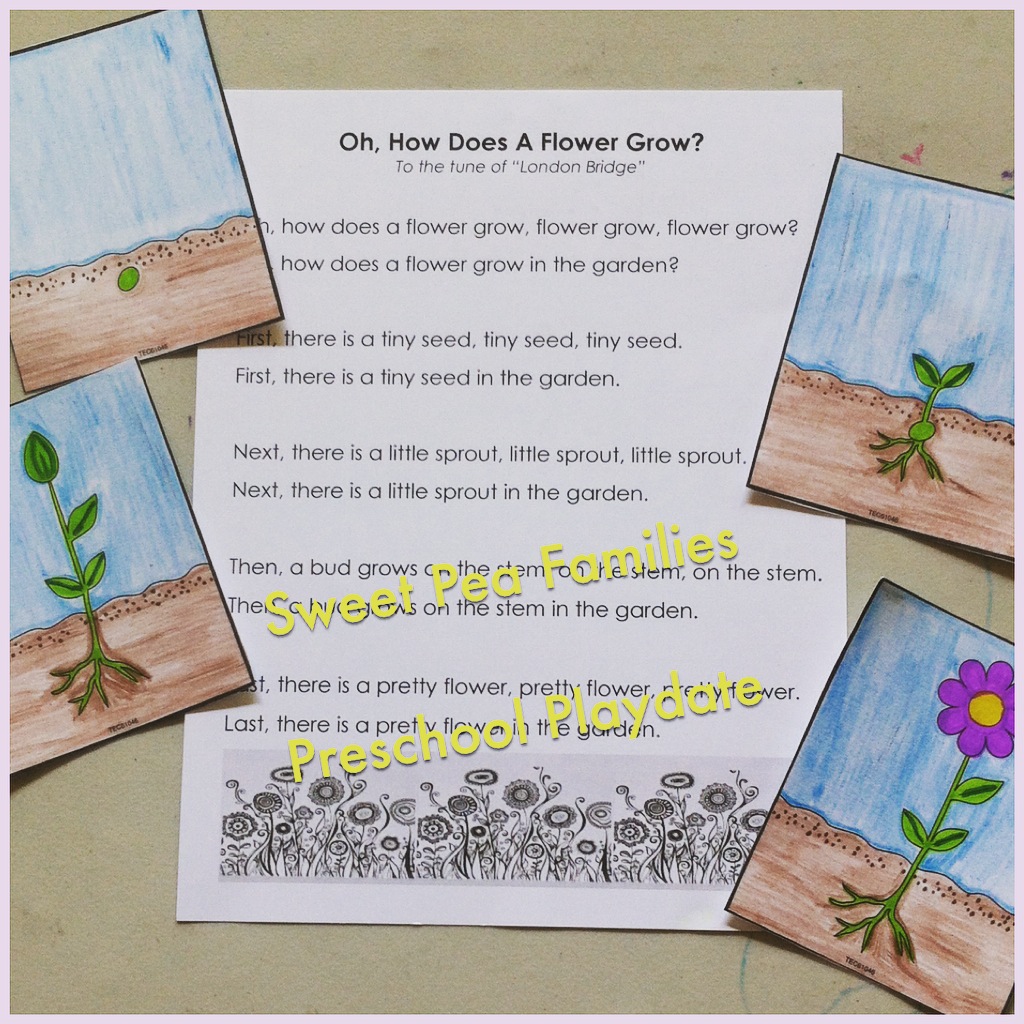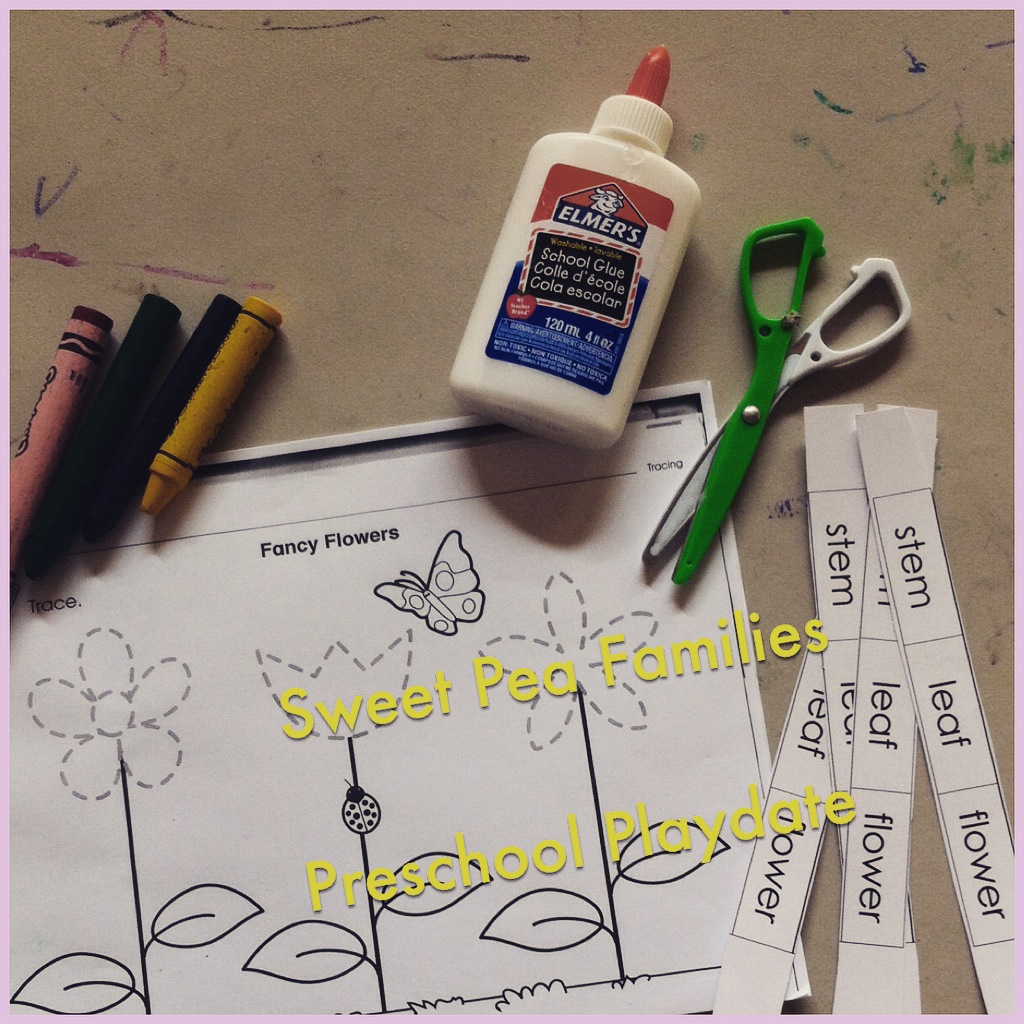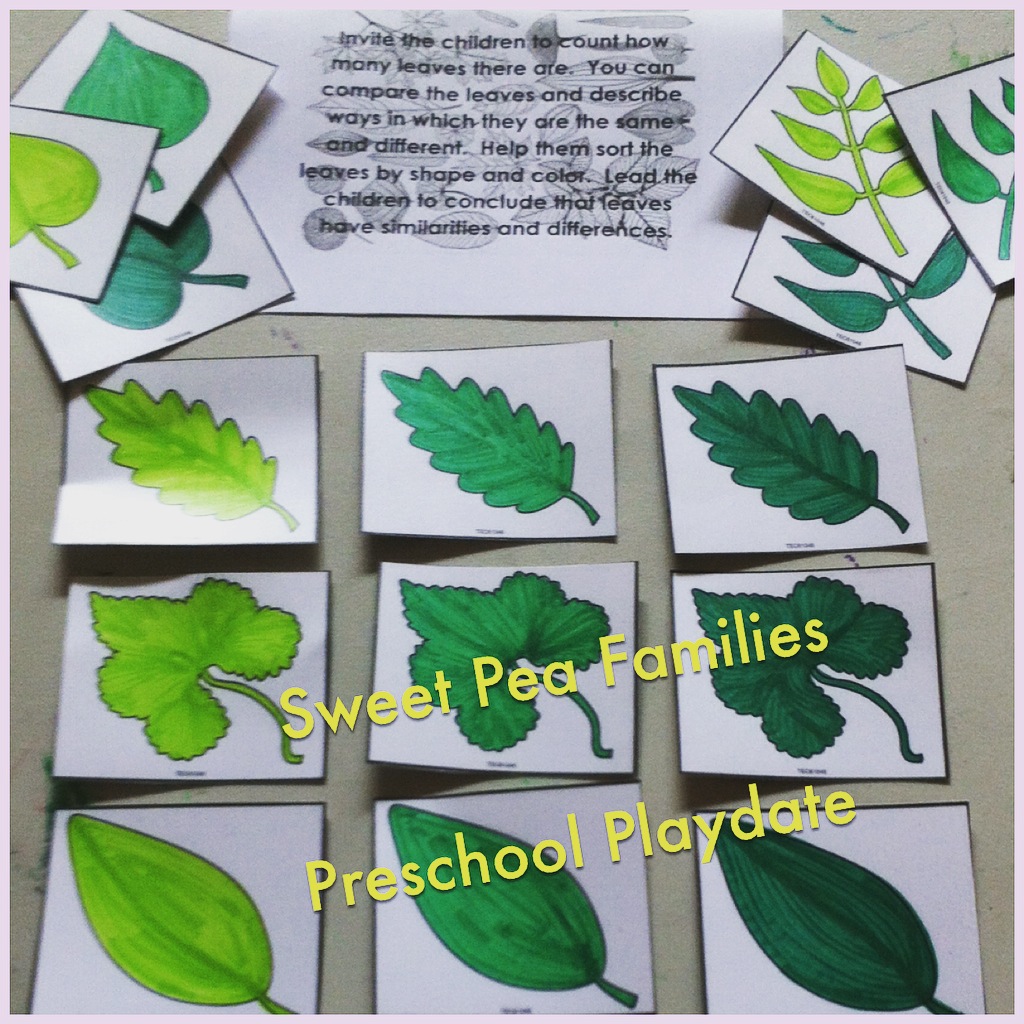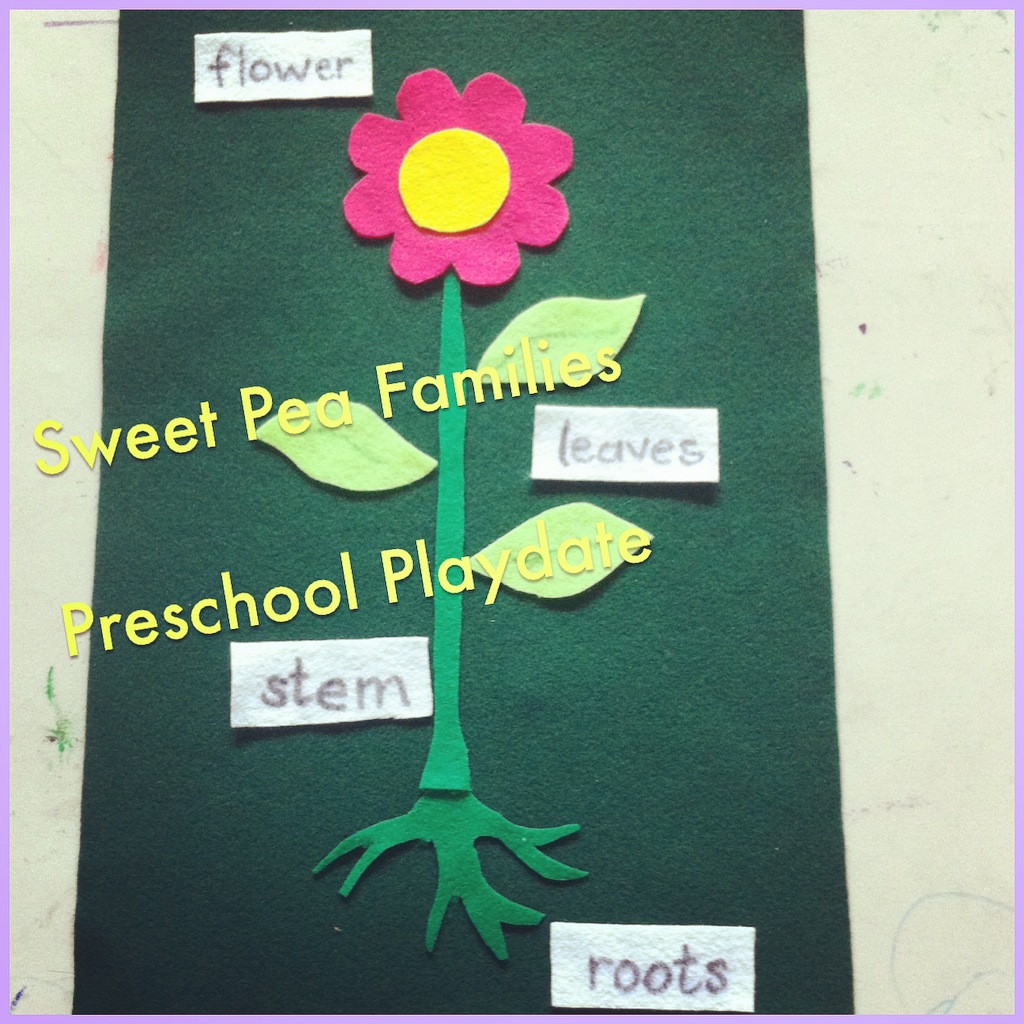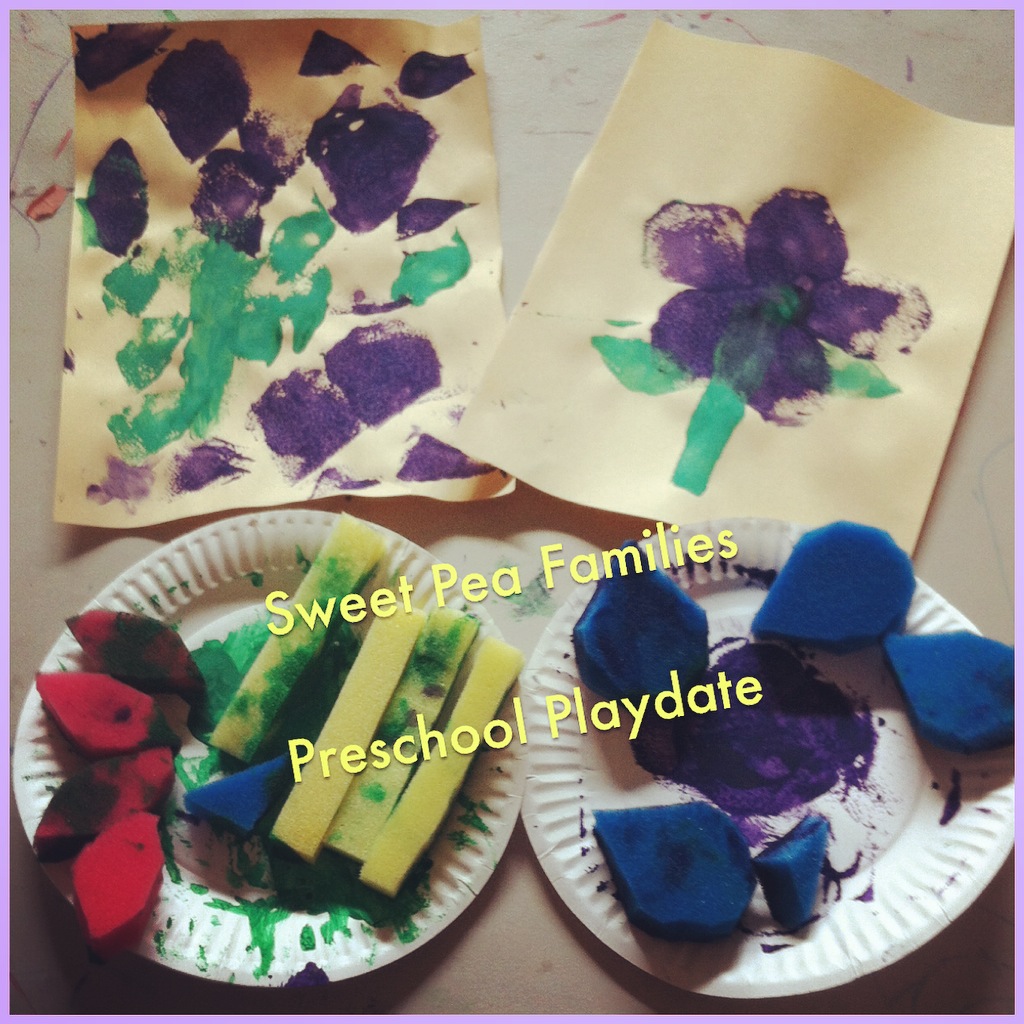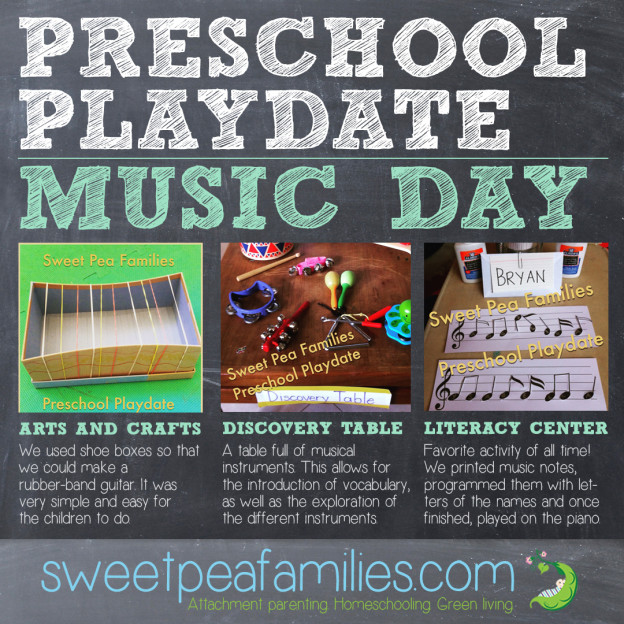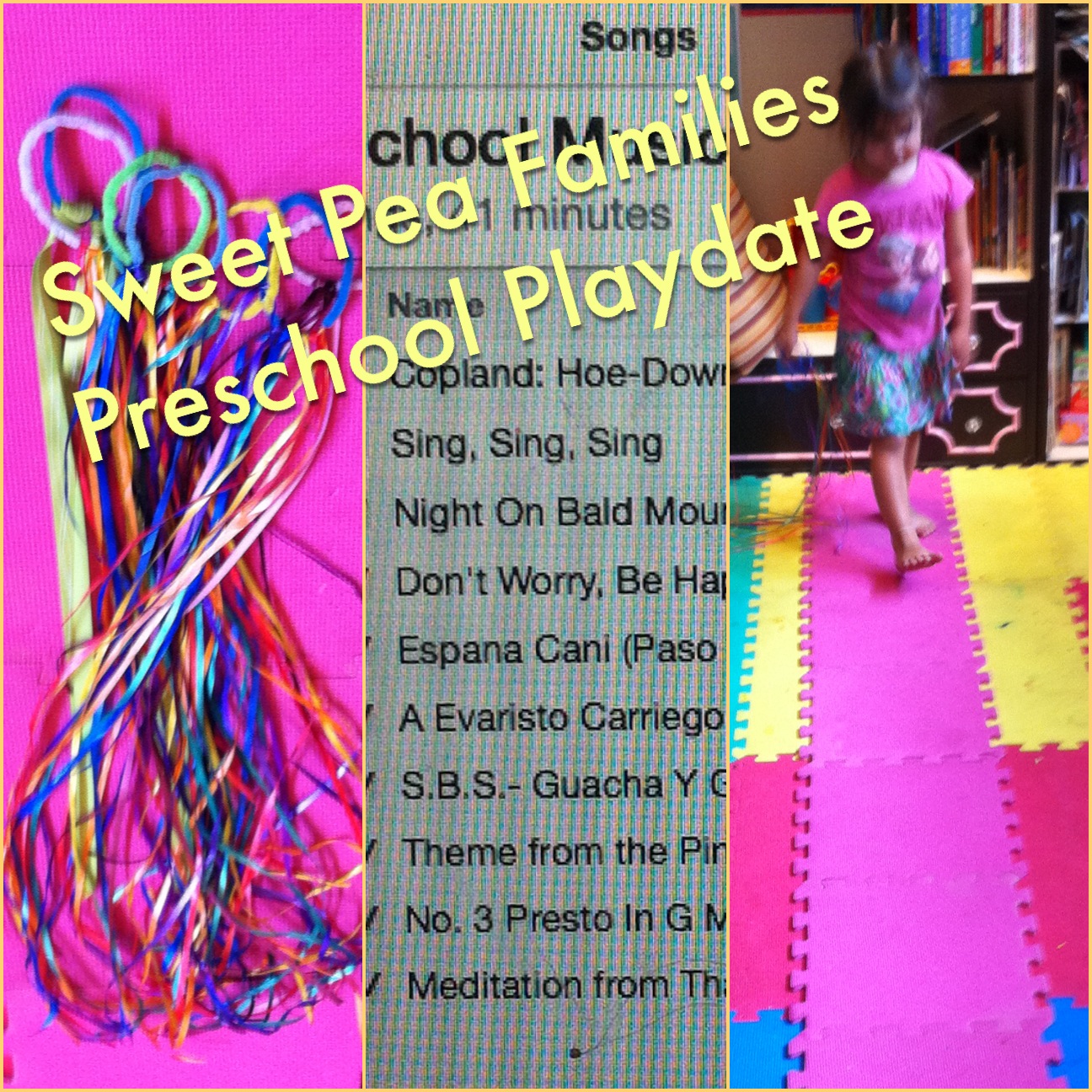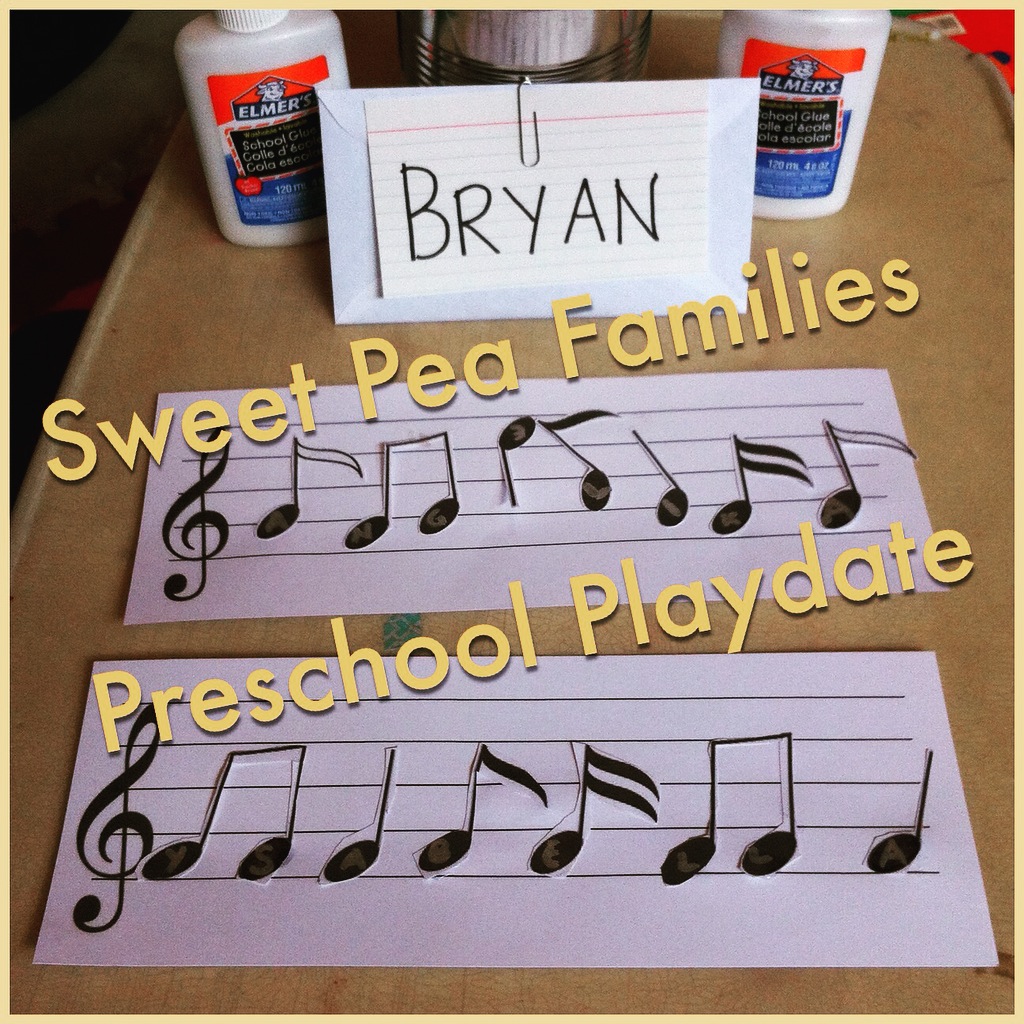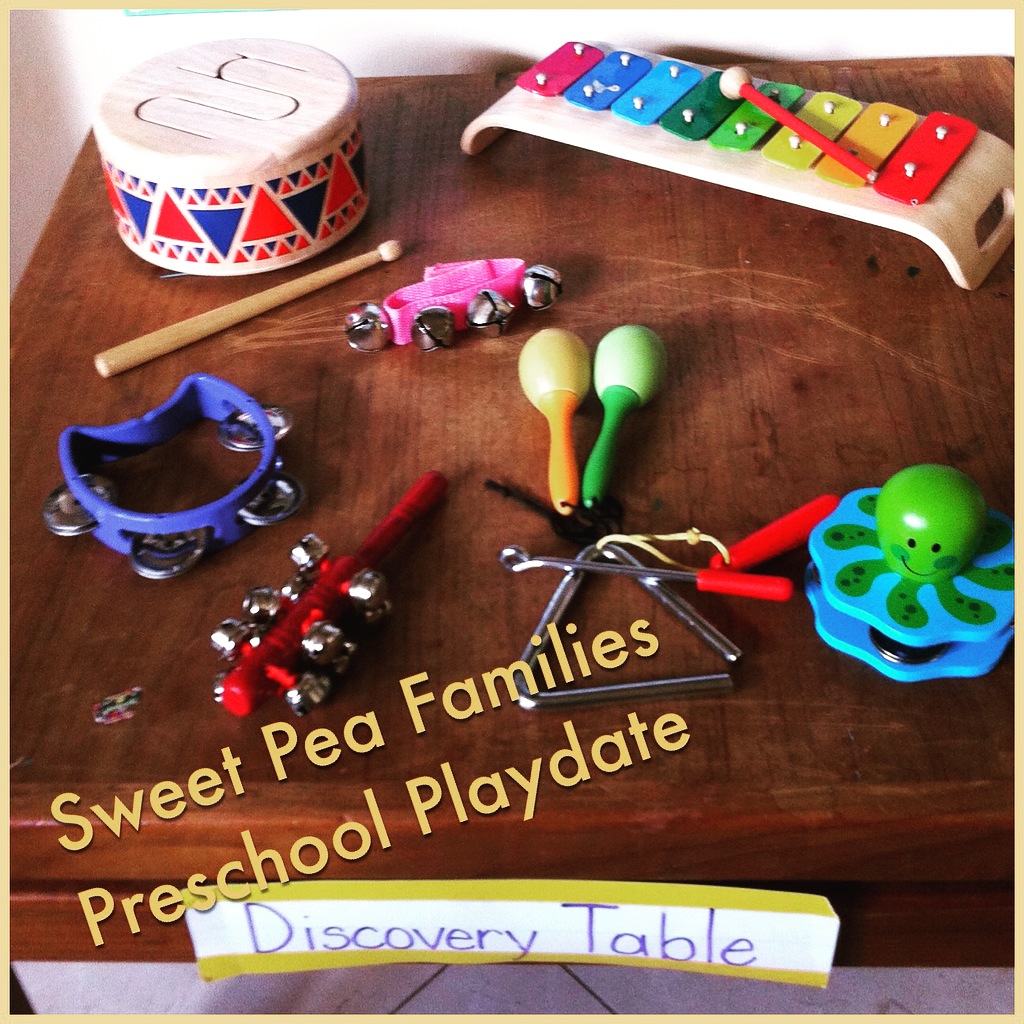We hosted a playdate in honor of Johnny Appleseed (née John Chapman) close to one of two “Johnny Appleseed Days” recognized in the calendar year. One day is observed on his birthday (September 26, 1774), the other on the anniverary of his death (March 18, 1845).
How we start our playdates:
— Welcome song in English (emphasizes printed name recognition as Sweet Peas find their card in a line-up and place it on our Name Ledge)
— Welcome song in Spanish (reinforces names as Sweet Peas sing to their peers)
— Discussion of theme
— Storytime
— Unsquiggle activity
— Poem/Song before we break for Centers
STORY TIME
We have a wonderful book about Johnny Appleseed from our Sonlight readers. Unfortunately, the text is too advanced for our preschools. So I improvised! I pulled together some highlights about Johnny Appleseed that went along with the beautiful two-page illustrations that are in this book. A toddler version of Johnny Appleseed’s life was born! Puma helped by reading out the text while I turned to the marked pages.
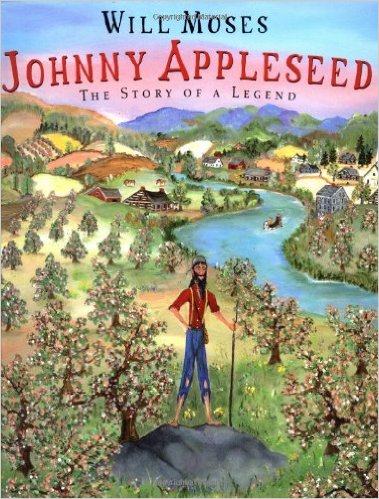
Johnny Appleseed: The Story of a Legend; Written and Illustrated by Will Moses
LITERACY CENTER
This was another week where I came up with my own idea for our letter center. Since “apple” is a common vocabulary word, I decided to work in the word and the letters that comprise the word, in addition to working in the colors of the apples the children would be tasting at the Discovery Table. This also had a tactile sensory component – the letters were different shapes, sizes and textures. I purposely made the two vowels with a red background to set them apart from the consonants. (Microsoft Word for Mac; Century Gothic Font; Outline option in the Font menu)
Level 1: Sorting and Sound Identification
If the child is still working on letter recognition, they can play at this center by sorting the letters into the correct bowl. As the letters are sorted, parents can reinforce the sound that the letter makes: “A says aah”; “E says eeh”; etc.
Level 2: Identifying Uppercase and Lowercase
The next step in this center would be to add in the concept of “uppercase” and “lowercase”, and identify them as they are sorted into the bowls.
Level 3: Spelling
For our advanced toddlers and the older siblings: the third option was to find the letters and place them in order to spell the word “apple”. The older siblings could look at the word for 30 seconds; then turn over the card; find the right letters and place them on the table; and then check their spelling by turning the card right side up for self-correction or confirmation that they spelled the word “apple” correctly.

MATH CENTER
This center reinforced counting concepts in English and in Spanish. The front of the card was printed with an apple. On the back side, I wrote out the number and the word in Spanish. I made these with an apple image I found online; fit them onto a “table” in a Word document, and printed them on cardstock. Final step was to cover them with clear contact paper so they would be more durable.
Level 1: Counting
A parent could simply take as many apples as the child could count, maybe add one more; and place the apples out on the table as they counted. Aside from teaching the order of the numbers, it reinforces 1-to-1 correspondence (more about that HERE).
Level 2: Ordering
A parent could use the reverse side, scramble the order, and have the child place them in the correct order. Younger toddlers might need the parent to call the number out for them; more advanced kiddos could order them independently.
Level 3: Memory Game
Using two sets of cards, parents could lay them out and play a memory game with their child. You could use as many cards as your child can remember placements. For a toddler just learning the concept of “Memory”, maybe you would play with six cards, finding the pairs for 1-3. With an older child, you might use the whole set of 1-6 pairs; or anything in between according the child’s interest and attention span.

DISCOVERY TABLE
This idea was pulled from The Toddler Calendar. Their activity included tasting raw apples, and apples cooked with cinnamon and sugar. Since we wanted to keep it simple and avoid any possible allergies, we stuck to raw and dehydrated apples. We offered red, yellow, and green varieties. There were not many pieces left on the plates at the end of our playdate; and I think we even refilled the yellow and the green!
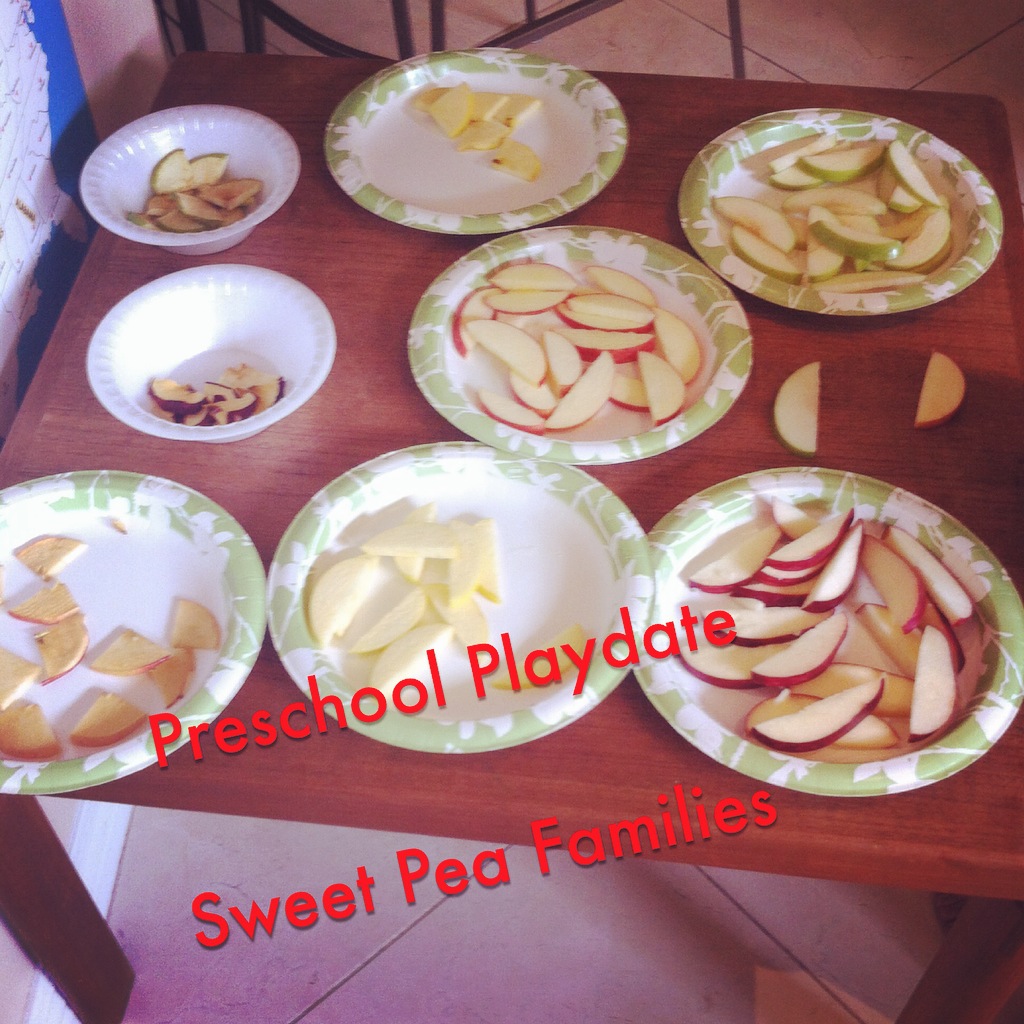
ARTS & CRAFTS ~ Make & Take
I always enjoy using natural objects in art. For today’s craft, I cut off the end of a carrot and pared opposite ends to form the shape of an apple. Children could dip it in red paint or green ink to print apples on their paper.
The other neat thing to show the children was how the center of an apple has a star shape. Some of the apples even had a six-point shape at the core! I learned something new, too! Lastly, we pulled out the seeds, and the children had the option to glue the seeds to their art projects.
As we showd them the seeds, we talked about how those same seeds could be planted to grow into big trees, that in turn could grow more yummy apples for them to eat.
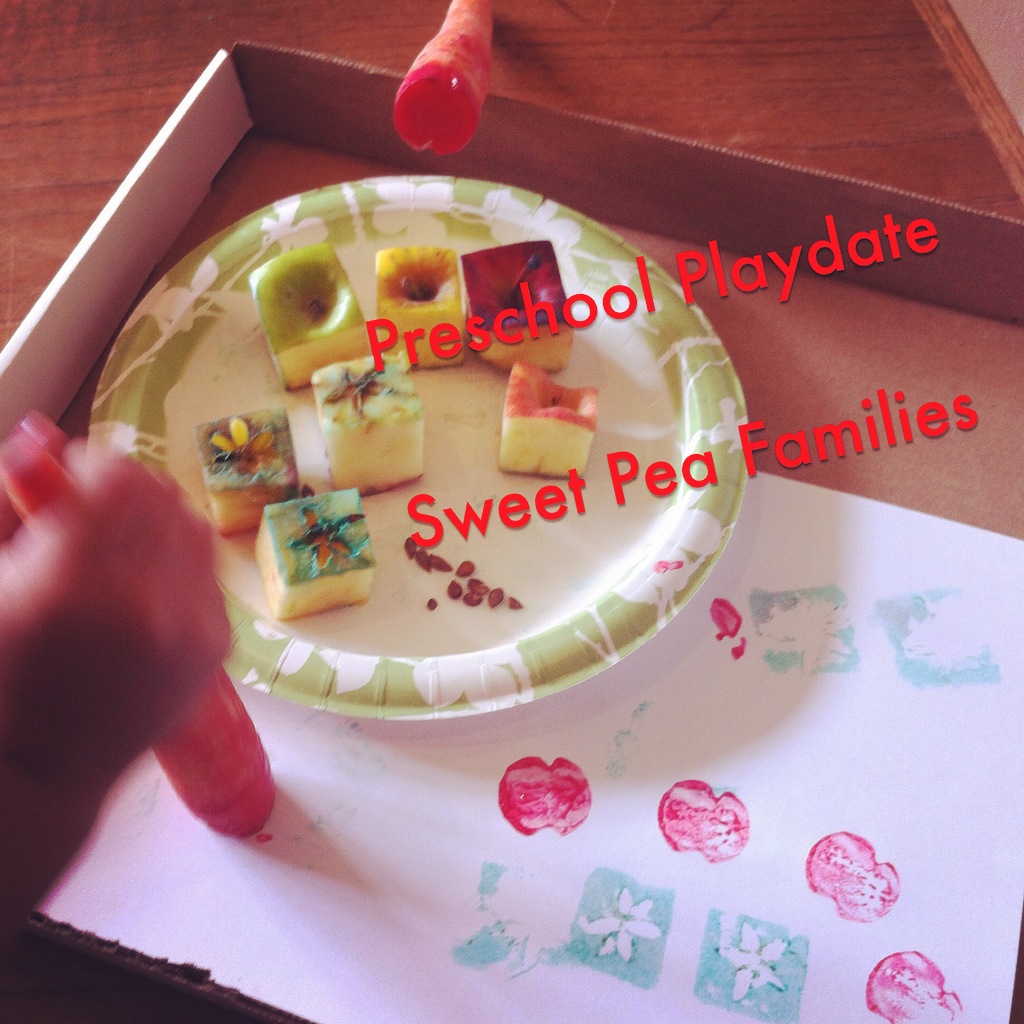
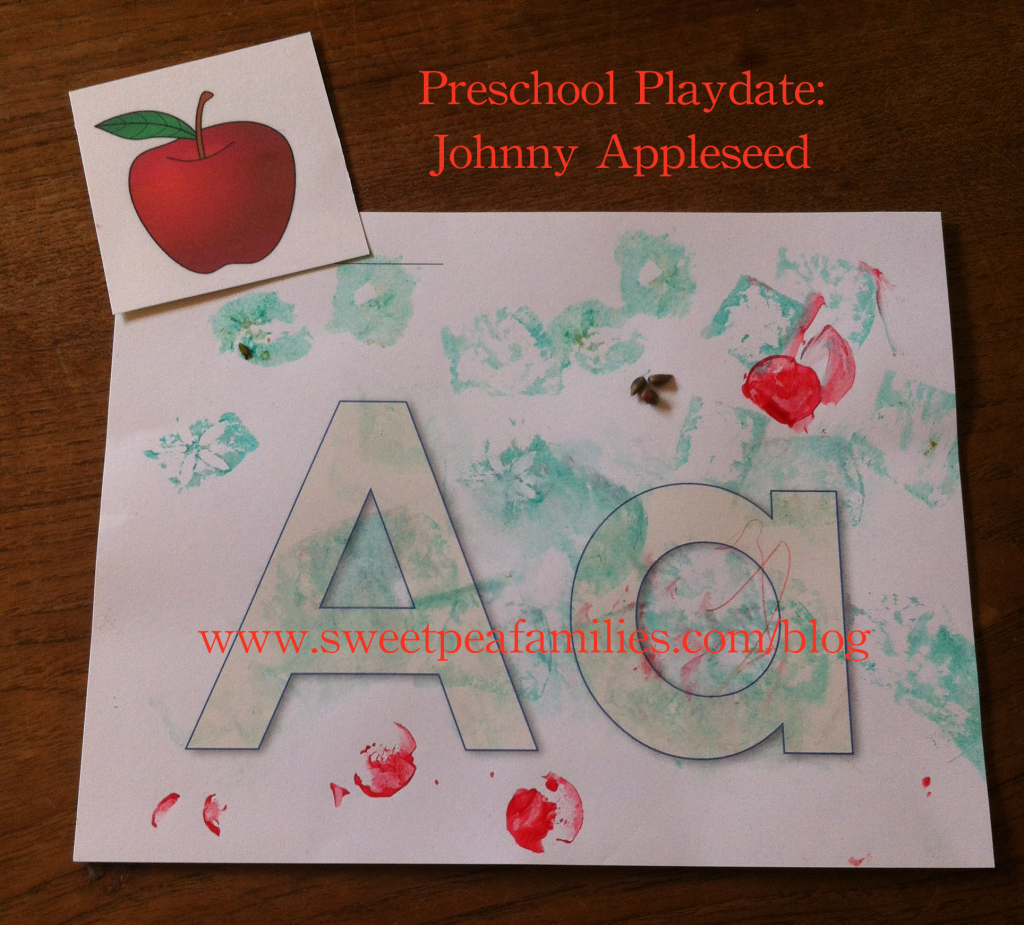
Here is the letter on cardstock; children printed and pasted on the letter “A” to reinforce the beginning letter sound.
We finish our Preschool Playdate with a sharing time: each child that wants to share gets to say what (s)he enjoyed the most about the morning. We close with a good-bye song where children are welcome to give hugs. It helps to set a formal end to the time together so that parents have a clear reason to insist that it’s time to go if they have somewhere to be afterwards. Otherwise, the kiddos and parents that don’t have to leave stay and play until the music teacher for our older Sweet Peas arrives.
I hope you enjoyed our tour through our Johnny Appleseed Day! I think the most fun for me was watching the kiddos explore all the tastes of the different apples, and seeing them enjoy food they had never tried before.
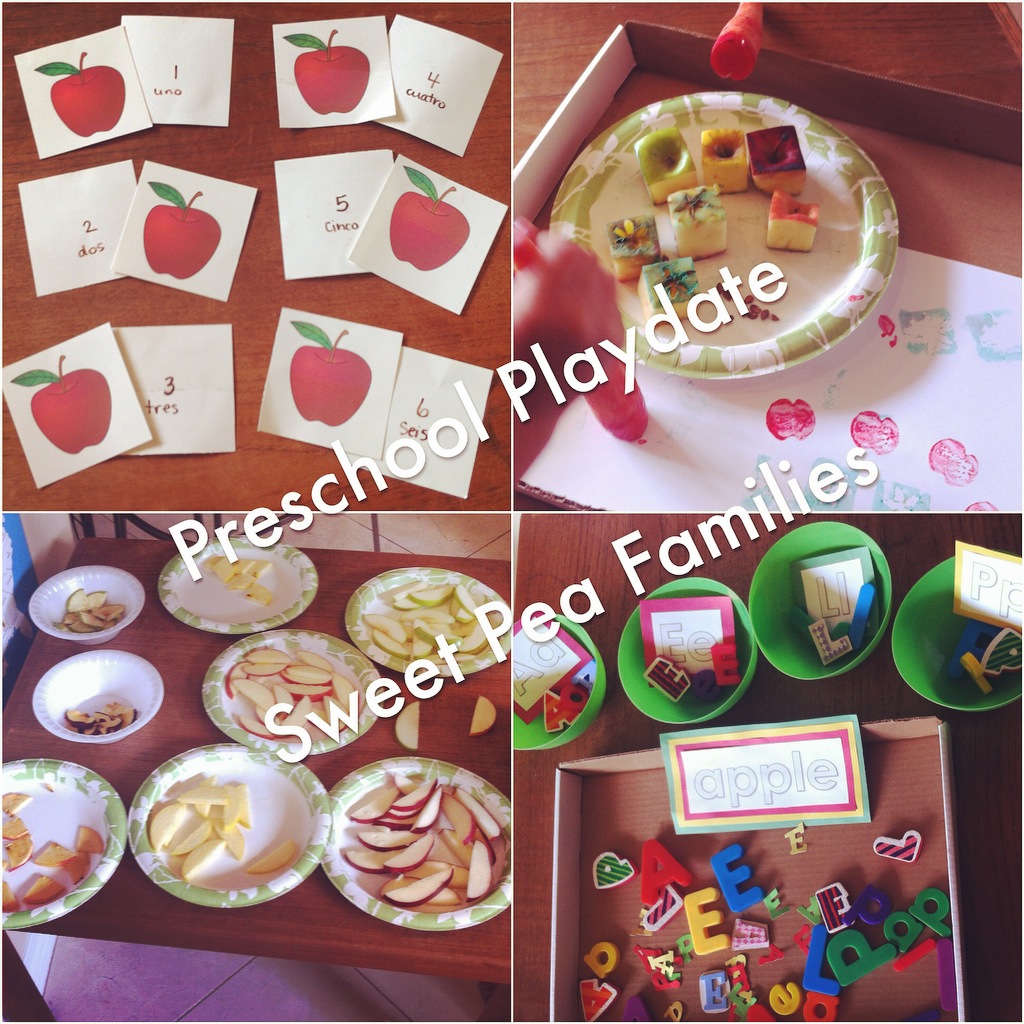
Like this:
Like Loading...

